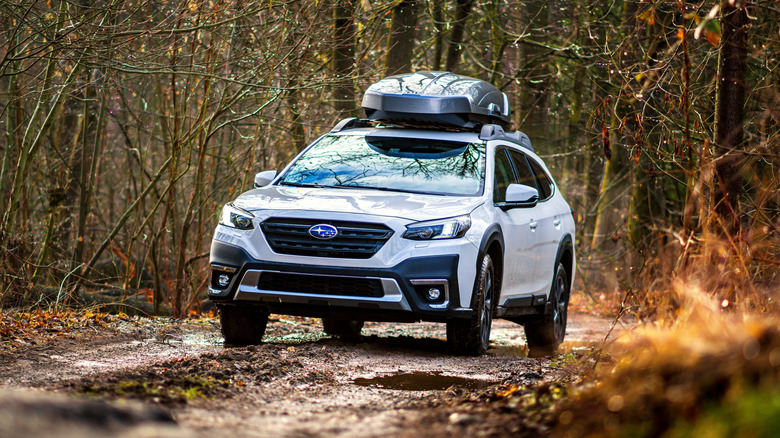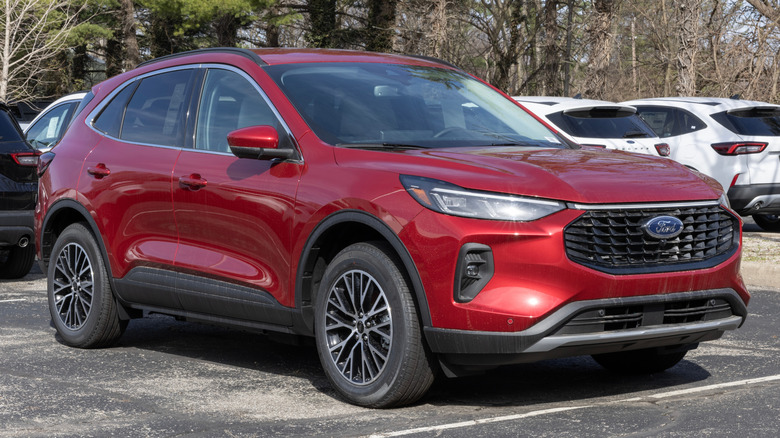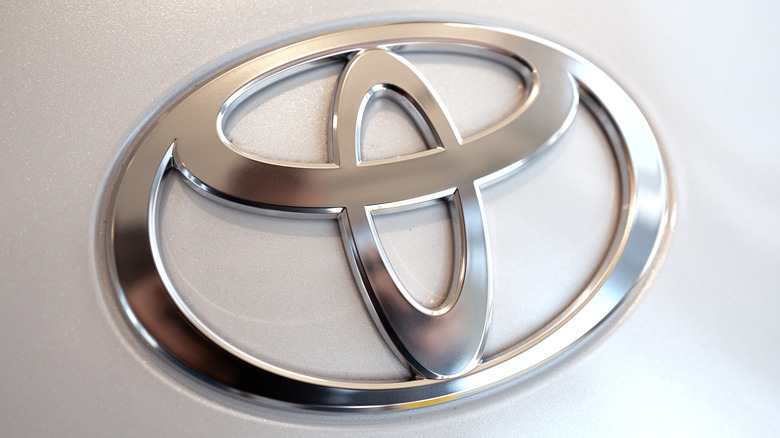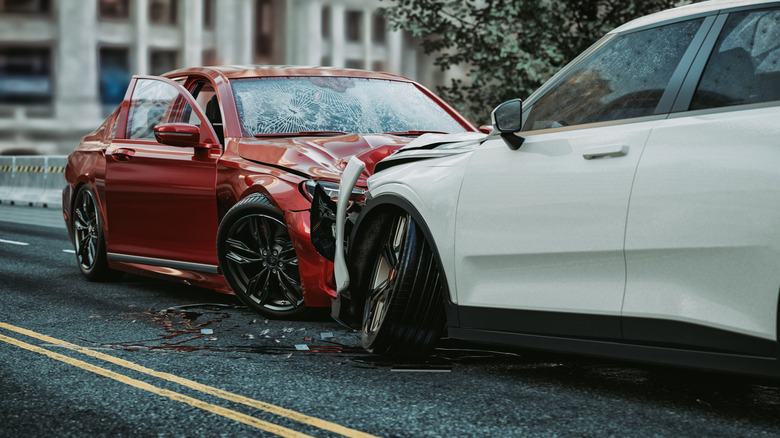The Cheapest Cars To Insure Aren't Below This Steep Number
The cost of purchasing, let alone maintaining, a vehicle in America is not cheap. This is only guaranteed to continue in light of 2025's car-specific Trump tariffs – in which the U.S. will be imposing a 25% tariff on imported automobiles and specific automobile parts. None of this is helped by the fact that the cost of purchasing a vehicle has been on the rise in recent years – in addition to the expenses that come with owning one. To be more specific, the average price of automobile insurance premiums have risen over 55% since 2020, according to data from the Bureau of Labor Statistics. As of 2025, Bankrate estimates that the national average cost of full coverage car insurance is around $2,685 a year, and the cheapest cars to insure aren't likely to fall below $2,000 a year.
With this in mind, certain car models and brands can leave you with a much more affordable insurance rate than others. While paying a couple hundred dollars less than the national average for insurance over the course of a year might not seem worth it to some, given the state of the economy — and ongoing inflation concerns — it could be worth saving money where you can. This could mean avoiding certain car brands that often come with higher insurance price tags. For instance, come models from Tesla, Audi, Lexus, and Dodge can range anywhere from $4000 to over $6000 a year just in insurance costs.
SUVs and Trucks that cost less than the national average to insure
A 2025 Bankrate study compared the average annual price of full coverage automobile insurance across 70 different makes and models. These included SUVs, sedans, trucks, and vans. From this research, it was clear that certain vehicles fell way below the national average insurance premium costs. For starters, it's worth noting that the research found SUVs and Trucks to have far lower annual insurance premiums compared to sedan models. The reason for this is because insurance providers generally recognize SUVs and trucks as safer due to their size and durability. The cheapest five vehicles that emerged on the list were the Honda CR-V and Pilot, Subaru Outback and Forester (which are both considered SUVs despite their hatchback appearance), and the Ford Escape.
The two cheapest cars to insure on the list were the Subaru Outback which is, on average, $1903 a year, and the Honda CR-V, which is around $1943 a year. Next on the list, the Subaru Forester and Honda Pilot are both in the $2040 range, while the Ford Escape costs around $2052 a year for full coverage insurance.
The cheapest smaller cars to insure
Anyone wanting to save on their car insurance without having to purchase an SUV or Truck do have sedan options to consider. Fortunately there are a variety of different sedans that average cheaper insurance rates than other comparable models. For starters, a Honda Civic costs around $2331 a year for full-coverage auto insurance. Similarly, a Mazda 3 will cost about $2362 annually to insure, while a Toyota Camry is around $2388.
However, if you're looking to purchase a vehicle that is not only good for the environment but will also save you money on gas in the process, the annual price of full coverage insurance for a Toyota Prius is around $2448. While this hybrid vehicle does cost slightly more than the other options, you are much more likely to save on gas every year in comparison thanks to hybrids being powered by both gas and electricity. In fact, according to Kelly Blue Book, some Toyota Prius vehicles can get up to 78 miles per gallon. That said, you shouldn't expect to achieve this every single time you get behind the wheel, as the average MPG for a Prius is closer to 57 miles per gallon.
The variability of auto insurance
It's also worth considering that depending on what insurance company you use — and the discounts they might offer — the cost of your monthly insurance premium can potentially be more or less than the previously listed prices. This is why it's always a good idea to compare auto insurance rates from different companies in your area as opposed to selecting a provider without doing additional research.
Also, in addition to the make, model, and even year of your car, your gender, age, location, and driving history can also contribute to the price of your insurance premium. For example, men generally have to pay higher insurance rates as they are statistically more likely to get into an accident and have driving-under-the-influence (DUI) events on their driving records. Similarly, car insurance rates are rising faster in certain states compared to others due to factors like crime and accident frequency.



